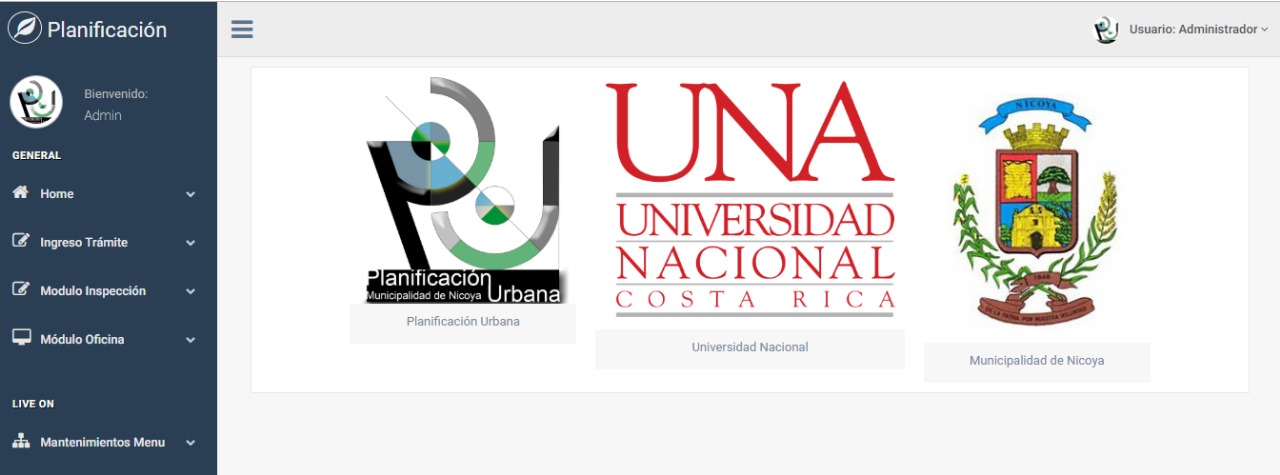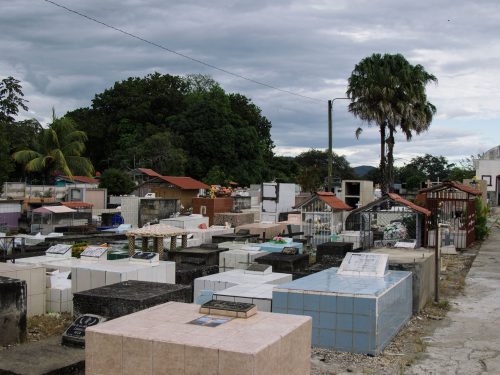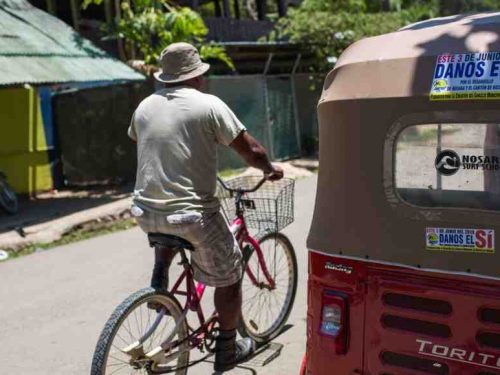
Starting in January, the City of Nicoya will implement a digital system in the urban planning department designed to speed up applications for land use permits.
The program was designed by four Nicoya students at the National University’s school of information systems engineering and was announced in Monday’s city council meeting. The project, according to the students, costs $7,500, but the city will get it for free because it’s part of their major.
We realized that there is a lot of paper in the department and sometimes it takes up to 22 days or a month to issue a land use permit,” said Abraham Obando, one of the students. “Some applications are even done twice.”
Students Alberth Espinoza, Alberth Esquivel, Abraham Obando and Mauricio Chévez created different types of users so that interested departments – from the mayor’s office to auditors – can check and see how many applications are pending, how many are under review or in the office, and how many cases there are for each district.
In order to build the digital platform, the students and the department of urban planning drafted a compendium of all the laws and regulations for granting a land use permit so that all the requirements an inspector has to verity appear in the system.
“Currently, it has to be done based on what the inspector remembers about the laws, or searching through archives,” said head of urban planning Yonathan Soto. “Now it’s all digitized, so that you can check with the click of a button.”

This is how the program looks like. Workers could enter even from their phones.
Every official must enter its username in order to enter the system. That way there will be a history of each inspector, the day, time and GPS coordinates as well as what items they checked off during the inspection. When the official finishes the inspection, Soto can verify the information and issue a resolution, a process that is currently slow because he must wait until the inspector returns to the office with the paperwork.
We have a lot of applications,” Soto said. “Land use permits are required now for almost everything, so we needed to find ways to optimize the procedures and one of those is to digitize it and avoid using paper. This year, to November, we had around 1,511 applications.”
Despite having finished the course, the students continue to give support to the planning department, in case there are complications with the program.
The program still needs to be made available for all residents, which is the next step. That way, they won’t have to go to city hall to file a land use application.
Another aspect that needs improvement is making the system work without internet, which it currently can’t, meaning that inspectors must take some papers with them in case there is no internet connection at the inspection location.
The students spent 20 months working with the urban planning department in order to build the platform. Now, according to Soto, there are two departments interested in working with the UNA students to develop similar projects because they currently work with Excel, or even a calculator.
The students told representatives that the city should take advantage of the accords it has with other students. “That way, other classmates can contribute their ideas and knowledge to problems that the city may have,” Obando said.






Comments